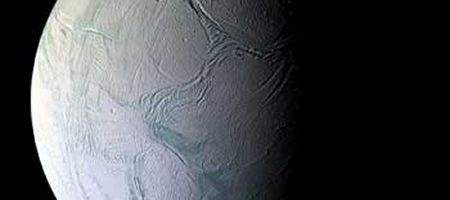It’s looking more and more likely that Saturn’s moon Enceladus has a large body of sub-surface water, increasing hopes that it may harbour life.
Scientists working on the Cassini space mission have found negatively charged water ions in the ice plume of Enceladus, as well as othernegatively charged ions including hydrocarbons.

“While it’s no surprise that there is water there, these short-lived ions are extra evidence for sub-surface water and where there’s water, carbon and energy, some of the major ingredients for life are present,” said Andrew Coates from University College London’s Mullard Space Science Laboratory.
“The surprise for us was to look at the mass of these ions. There were several peaks in the spectrum, and when we analysed them we saw the effect of water molecules clustering together one after the other.” The measurements were made as Cassini plunged through Enceladus’ plume on March 12, 2008.
Enceladus thus joins Earth, Titan and comets as places where negatively charged ions are known to exist.
The Cassini plasma spectrometer, originally designed to take data in Saturn’s magnetic environment, measures the density, flow velocity and temperature of the ions and electrons that enter the instrument.
But since the discovery of Enceladus’ water ice plume, the instrument has also successfully captured and analysed samples of material in the jets.
Early in its mission, Cassini discovered the plume that fountains water vapour and ice particles above Enceladus. Since then, scientists have found that these water products dominate Saturn’s magnetic environment and create Saturn’s huge E-ring.






